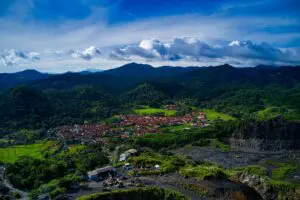Operational and Capital Cost Comparison: Barrick’s Reko Diq Project vs. WOODY Benchmarks
Accurate cost modeling is essential for project developers seeking to align internal expectations with investor realities. Benchmarking tools like WOODY provide an independent, data-driven framework to test assumptions, determine cost gaps, and improve planning confidence. WOODY delivers detailed, bottom-up cost models built from real-world inputs and extends this framework across thousands of mining assets with daily cost updates, giving developers the ability to situate projects like Reko Diq within broader industry benchmarks.
The Reko Diq project in Pakistan provides a valuable case study for comparing company-reported cost estimates against independent benchmarks.
WOODY’s Breakdown of Operating and Capital Costs
Using the same throughput and production parameters disclosed in Barrick’s public filings, WOODY returned higher operating costs and closely aligned capital costs for the initial Phase 1 of the project.
On the operating side, WOODY returned an operating cost of US$18.94 per ore tonne, compared to the company’s reported US$16.52. The US$2.42/ore tonne difference reflects WOODY’s more inclusive treatment of indirect labor, detailed maintenance, site services, and administrative overhead—cost categories that are often minimized or excluded in cost estimates.
On the capital side, WOODY generated an estimate of US$4,623.74 M, versus Barrick’s US$4,750.00 M. The US$126.26 M variance (~3.0%) shows strong alignment, though WOODY’s methodology systematically applies allowances for construction management, contractor mobilization, and contingencies.
It is important to note that while Barrick’s Reko Diq Feasibility Study includes capital costs for off-site infrastructure and Owner’s Costs, these have been excluded from WOODY’s estimate, as the technical study has not been specific enough for WOODY to complete a reliable capital cost in these areas. Off-site infrastructure (US$335.00 M) includes costs for bore field water supply, off-site water pipelines, rail facilities, and port facility upgrades, while Owner’s costs (US$480.00 M) include spares/inventory, first fills, pre-production operating costs, owner’s management team, permitting, public relations, community engagement, as well as other project related costs.
Barrick’s Reported Breakdown of Capital and Operating Costs
Reko Diq’s reported costs reflect Barrick’s internal assumptions around development strategy, use of infrastructure, and risk distribution. With a total capital cost of US$4,750.00 M and operating costs of US$16.52 per ore tonne, the project sits within feasibility-level ranges but likely compresses indirect costs and escalation allowances.
Total Operating Cost Comparison (US$/ore tonne) Between WOODY and Barrick
WOODY’s operating cost estimate of US$18.94/ore tonne is roughly 15% higher than Barrick’s US$16.52/ore tonne. This variance highlights how narrower scoping and optimistic inputs can create blind spots in financial planning, particularly for large, remote projects. By capturing more indirect and support costs, WOODY offers a more conservative but realistic perspective on the true operating burden.
Total Capital Costs Comparison Between WOODY and Barrick
On the capital side, WOODY’s estimate of US$4,623.74 M sits just below Barrick’s US$4,750.00 M. While the variance is small (3%), the comparison emphasizes the importance of applying consistent treatment to indirect and contingency factors that may become material during execution. For projects with long construction horizons, such allowances can be decisive in determining whether budgets remain aligned with outcomes.
Why Benchmark with WOODY?
Benchmarking with WOODY provides developers with a transparent, bottom-up check on internal estimates, ensuring that critical indirect costs are accounted for early while also enabling continuous monitoring of costs amongst global peers. With its daily refreshed data on consumables, labor, and equipment, WOODY allows project teams to position assets like Reko Diq within the broader market and track cost fluctuations that could materially impact project economics.
By validating Barrick’s reported costs against WOODY’s independent benchmarks and situating them within WOODY’s global dataset, stakeholders gain a clearer, more defensible understanding of a project’s economics—an essential step in de-risking development and securing investor confidence.
Learn more about WOODY here: WOODY | Costmine Intelligence


























